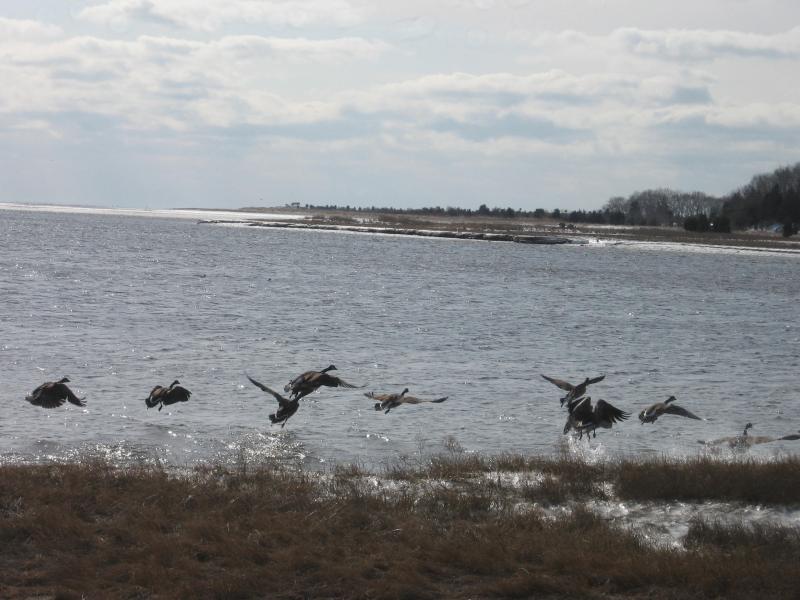Geese abound in local waters, Lloyd Center reports
This winter is shaping up to be the season of the goose, according to the first count of the Lloyd Center for the Environment's annual winter waterfowl survey.
The Lloyd Center began the survey in 1988 with a focus on the American black duck and a goal of determining how important the habitats were to the species. From there, the survey expanded to 21 locations in Dartmouth, Westport, Tiverton, and Little Compton. Locations include marshes, salt ponds, rivers, and freshwater ponds.
The survey, which typically takes place the first Sunday in December and the last Sunday in January, provides researchers not only with information about the diversity and population size of waterfowl, but also about the health of the estuaries themselves.
According to preliminary findings by Research Associate Jamie Bogart, volunteers were able to identify 5,620 birds in the region’s waters— the highest total since 2018, which saw 8,494 counted.
The most prominent waterfowl found was the Canada Goose, which saw 1,488 birds counted — an increase of 651 from last year.
The majority of geese were distributed between Nonquit Pond and the vast Westport River, both locations Bogart said attract geese. A big reason for the population increase, he said, is conditions improving in estuaries due to lower tides at the time of the count. Last year, the survey occurred under moon tide.
This change in tide saw numbers surge at the Westport River, which saw almost no geese in late 2021. In the latest survey, volunteers counted 536 geese in the estuary.
“Considering many geese were likely also present in fields, one wonders if recent winter weather further north sent some migrant birds our way and increased numbers,” Bogart wrote.
Estuary species such as the American Black Duck, Bufflehead, and Red-breasted Merganser also saw population increases, according to the December count.
Bogart said this is likely due to more accessible food sources caused by lower waters, and a falling tide “which can attract birds to especially flowing systems during the count.”
Allens Pond had the highest black duck abundance, with 277 counted at the Mass Audubon property. The Slocum River / Little River complex had similar totals, but a slight shift from Little River to the Slocum River this year, according to Bogart.
Bufflehead were most commonly seen on the east branch of the Westport river, with 402 birds counted.
Red-breasted Mergansers were found primarily at the Slocum River/Little River, where they were absent last year.
The count will resume in the new year. To learn more, visit lloydcenter.org.












